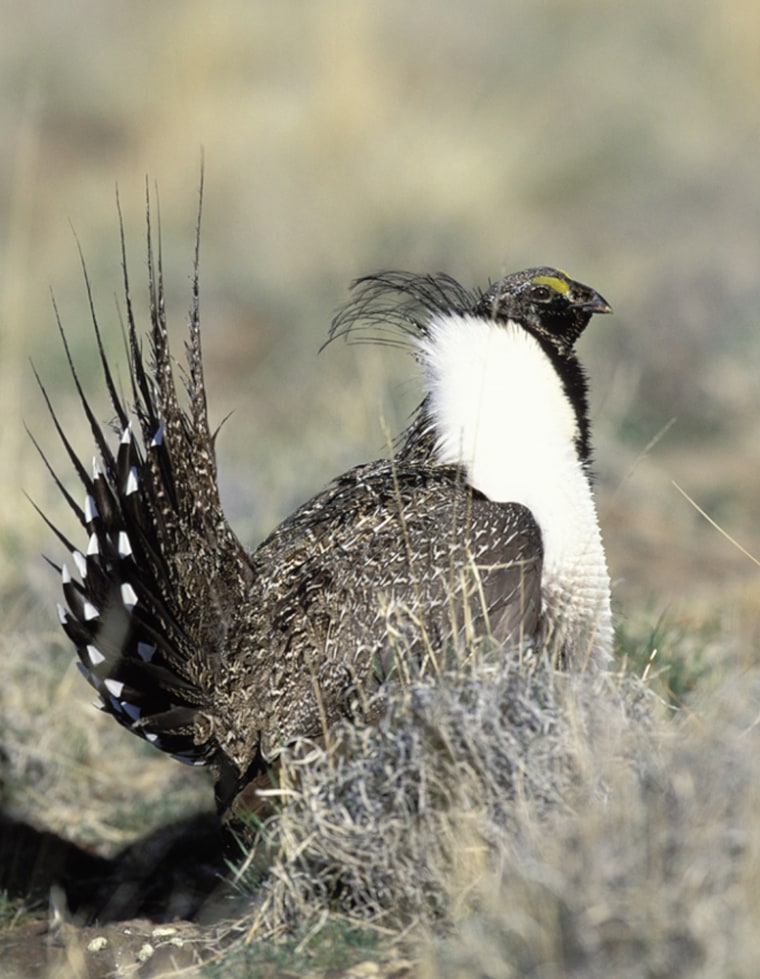The Interior Department said Monday it will begin delaying some new oil and gas drilling projects until the effects on wildlife are studied more thoroughly.
But some environmentalists were skeptical, saying the department has routinely ignored its power to defer energy leases for the sake of wildlife.
“Actions speak louder,” said Peter Aengst, an energy policy analyst for The Wilderness Society in Bozeman, Mont. “I haven’t yet seen where they’re doing that. It’s always been full speed ahead with energy development — lease, lease, lease.”
262 million acres covered
Assistant Interior Secretary Rebecca Watson described the new policy as a response to American Wildlife Conservation Partners, a coalition of groups ranging from Ducks Unlimited to the National Rifle Association. She said it would apply to all 262 million acres — about one of every 10 in the United States — managed by Interior’s Bureau of Land Management.
“We value them because we think they’re the experts on wildlife,” Watson said.
Robert Model, president of the Boone and Crockett Club in Missoula, Mont., said he was pleased the Bush administration “has taken to heart our recommendations. ... It’s been frustrating for us in the past not to have a voice in the decision-making.”
The BLM is rewriting 162 plans for managing that vast acreage. Watson said federal officials who decide what to do for those areas can choose to hold off offering new oil and gas leases if they think the current plans for protecting wildlife are not adequate.
Watson said she told BLM managers to “use your power to temporarily defer leasing” for oil and gas drilling. “What this does is let the BLM managers hold back some areas while the new plans are being developed,” she said.
Watson said 22 of the new plans are “time-sensitive” because they respond to lawsuits, apply to new national monuments without old plans or speed energy development in New Mexico, Colorado, Utah, Wyoming and Montana.
Politics of wildlife
Both President Bush and Democratic presidential candidate John Kerry have been seeking votes among hunters and conservationists. Earlier this month, for example, Bush told several hundred farmers, ranchers and sportsmen in Minnesota that the 2002 farm bill he signed would provide $40 billion over the next decade to restore millions of acres of wetlands, protect sensitive habitats, conserve water and improve streams and waterways near farms and ranches.
The Kerry campaign, however, said Bush had consistently siding with industry when choosing between corporations and sportsmen. “He’s pursued policies that take direct aim at the laws that protect America’s hunting havens and fishing holes instead of working to strengthen them,” Kerry spokesman Phil Singer said.
Watson said the government also is developing new ways of monitoring wildlife, for which her agency now spends about $20 million a year. She pointed to a test project near Pinedale, Wyo., involving the BLM, the Forest Service and Wyoming officials.
In June, Wyoming Gov. Dave Freudenthal complained to BLM that it was “premature at best” to offer more land around Pinedale for oil and gas drilling while a new federal plan for managing the area was incomplete. The BLM went ahead with the lease sales anyway.
Freudenthal had told BLM officials that the leasing would “further jeopardize sage grouse habitat, migration corridors, crucial habitat and other important resources” for wildlife.
